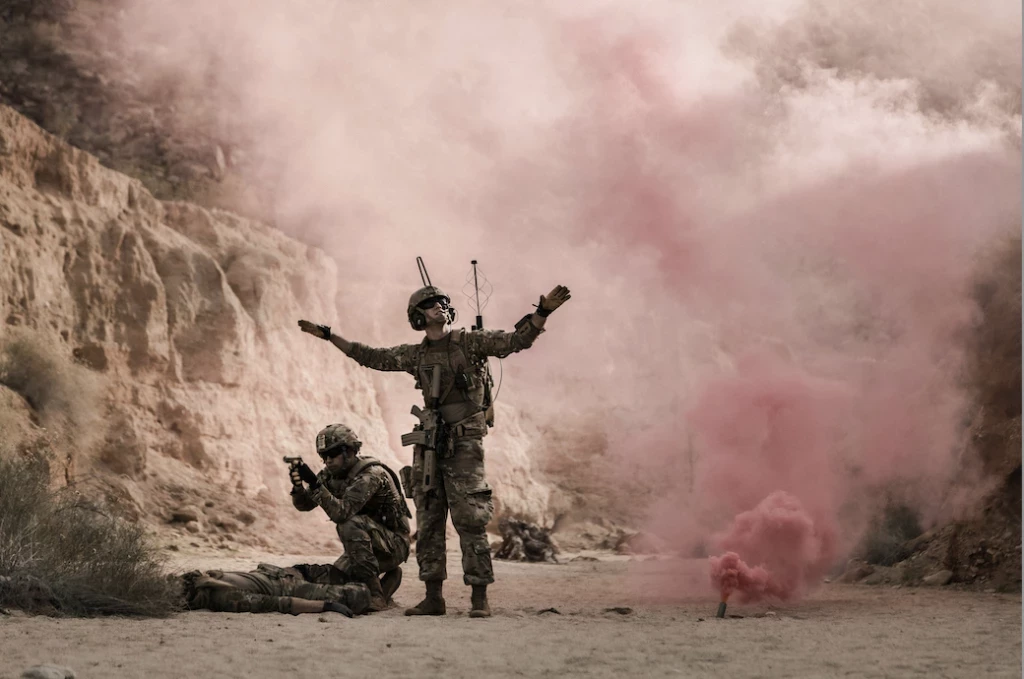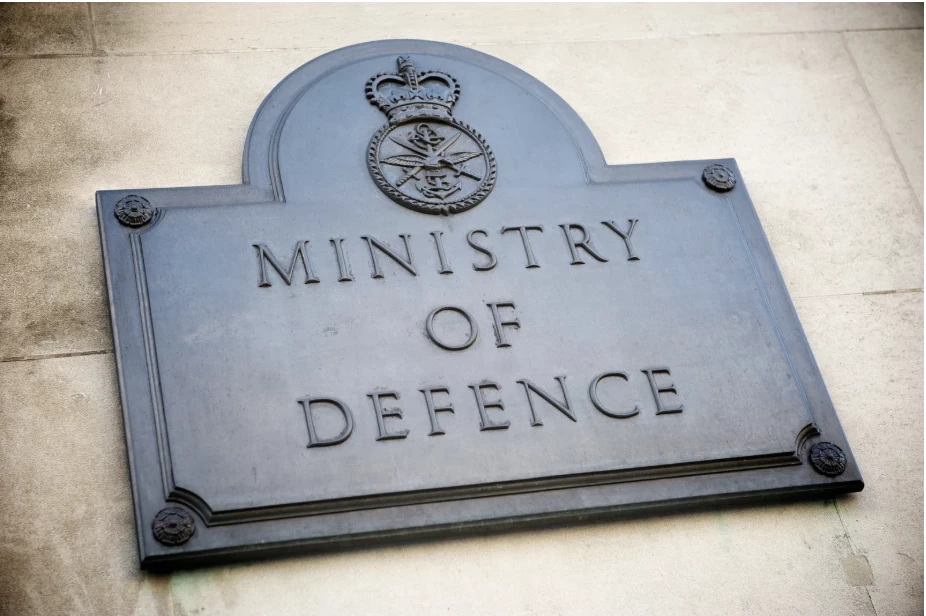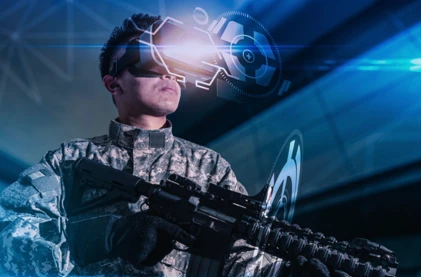How will drones affect infantry tactics?
With unmanned aerial vehicle (UAV) technology developing rapidly, military leaders, analysts as well as defence industries around the world are coming up with new methods to both utilize them and combat them in the field.
Add bookmarkUAVs And The Future of the Infantry Squad
With unmanned aerial vehicle (UAV) technology developing rapidly, military and industry are coming up with new methods to both utilize them and combat them out in the field. Drones can provide an element of risk reduction through value-adding activities, such as recce and the ability to perform offensive strikes, or provoke a specific reaction in a unit, all the while minimising the exposure of the users operating them.
RECOMMENDED: Defence Predictions and New Technologies
Indeed, UAV technology presents plenty of beneficial opportunities, but it is important that drones remain-value adding, and efforts are made not to increase the cognitive and physical burden on infantry that will have to carry them, use, and retrieve after a mission.
The US Military Goes Shopping
The US Army has ambitious plans regarding infantry use of drones. For example, in 2018 the US Army awarded a $2.6 million contract to FLIR Systems Inc. of Wilsonville, Oregon, for an undisclosed number of “Black Hornet Personal Reconnaissance System — a miniature helicopter with video cameras [which] enables infantry squads to see enemy units from the air.” The platform weighs about the same as a parakeet, and it can “can shoot live video with either a daylight imager or infrared, has a range of a little less than a mile and can fly for 25 minutes at a speed of 13 mph.” The contract is part of the Soldier Borne Sensor program.
How will drones change infantry composition? Source: Shutterstock
Other companies are manufacturing light drones as well. For example, InstantEye Robotics reported in November 2018 that it had “secured a contract with the Defense Logistics Agency (DLA) in support of PMA-263, the Navy and Marine Corps Small Tactical Unmanned Aircraft Systems (SUAS) Program Office, to field 32 InstantEye Mk-3 GEN5-D1 SUAS systems (64 aircraft).” Like the Black Hornet, InstantEye Robotics’ SUAS systems are light, for instance, the one sold to the US Marines has a weight of around 250 grams.
Counter drone systems
Just as companies are developing lighter and more efficient drones, other companies are developing products to disable them. For example, IXI EW has developed the Drone Killer, which is available either as a rifle or as a system that can be attached to a rifle. Similarly, the Israeli company Smart Shooter has manufactured a fire control system called SMASH 2000 Plus that has a “drone mode.”
RECOMMENDED: The future of drone and counter-drone technology
Military and civilian agencies are trying to figure out how drones will affect the way infantry units operate. The advantages they provide, as well as the threat of enemy drone platforms, are still debated at the squad and battalion level.
The National Academies of Sciences, Engineering, and Medicine and other agencies published a joint report, titled Counter-Unmanned Aircraft System (CUAS) Capability for Battalion-and-Below Operations, in 2018, which has been widely read and quoted as it discusses precisely this issue. The report touches on issues including how to counter enemy drones, like for example jamming radio frequencies. (One problem is that new drones “can operate without radio frequency command-and-control links by using automated target recognition and tracking, obstacle avoidance, and other capabilities enabled by software.”)
Discussion: The infantryman and UAVs
There are several issues to keep in mind when discussing how UAVs (nano, or small) will fit within the US Army. Let's consider how this will affect a standard infantry squad of 9-14 members.
One obvious issue is weight. If a light infantry unit wants to bring such capabilities to the fight then troops must allocate space and weight to this kit. This will require additional manpower to carry the apparatus, no matter how light it is, which prompts an important question: if a soldier has to carry a UAV kit (the platform itself, a control system, power supply and so on) then what part of a kit will a soldier leave behind? This is a difficult call for commanders given the various risk mitigation strategies required for successful operations.
The extra weight may impede on the ability to carry our traditional force activities. If we accept the average rifleman will carry around 100lbs of equipment including a rifle, backpack with ammo, rations, water, and body armour. The idea of adding more weight to will not be appealing, particularly for operations that can last multiple days. This is one of the core reasons propelling industry to focus on making drones lighter and smaller.
On the other side of the spectrum, how will forces deal with adversarial drones? There have already been several analyses on this issue, see for example “On Drones and Tactics: How Unmanned Platforms Will Change the Way the Infantry Fights,” by 1st Lt. Walker Mills for the Modern War Institute.
Even more, there have already been incidents in which unnamed aerial vehicles were utilized by insurgents and foreign combatants to strike at US and Coalition forces, and also for the purpose of testing their reactions to these probes.
As for anti-drone technologies, currently, they vary from weapon-sized devices, which means carrying an extra rifle (e.g. the full-sized version of the Drone Killer), to a smaller system that is attached to a standard rifle such as an M4 (like the Smash 2000 Plus). The question again comes back to the issue of weight.
RECOMMENDED: Europe's drone conundrum: Countering the threat
What is worth taking into the field? Can the capability to neutralize enemy drones be accomplished through traditional methods or is anti-drone gear absolutely necessary for combating these devices?
Lastly, as a US Army service person with combat experiences explained to the author, “will we even be aware of these devices prior to being engaged, and are they employed in such numbers that we still find it necessary to carry this gear to fend off secondary attacks?”
Moreover, there is the question of how will UAV and anti-UAV technology affect the composition of infantry squads themselves. Will there be a sole “droneman” that carries the unit’s UAVs, as well as anti-UAV gear like a Drone Killer rifle or Smash Plus system? It will be interesting to monitor whether the US Army revisits the composition of an infantry squad in itself to adapt to this new technology.
The US Marine Corps is reportedly testing new squad compositions. “The sizes being considered were 11-, 12-, or 14-man arrangements, and some considered having the squad systems operator carry the M4 carbine to reduce the load, as it is a smaller, lighter weapon,” explained a December 2018 article in the Marine Corps Times, for example.
Lastly, squad leaders will have to decide whether UAVs and anti-UAV technology adds value, especially when considering changes in unit dynamics and the additional burden on the supply chain and logistical tail. The cost of replacing and maintaining these assets may be very high. However, that opens the doors for other up and coming solutions such as additive manufacturing and 3D printing.
RECOMMENDED: This is how militaries can defend against drones
The proliferation of this technology is also something to consider. If these assets become more numerous, the likelihood of them getting lost account or captured is high. What data will be aboard these systems and will how can it be leveraged by adversaries?
Final Thoughts
Recent analyses are increasingly focusing on understanding how this technology will affect the infantry, as small drones and nano-drones are beginning to be integrated into units. Indeed, the era of UAV military technology is in full swing and we are just beginning to grasp how it will affect the future of warfare, especially in the areas of logistics, medical evacuation, reconnaissance, and offensive support. Under the right condition set, there is no question that small UAVs can be employed to suppress and disrupt small enemy units.
About the Authors:
Wilder Alejandro Sanchez is an analyst who focuses on geopolitical, military and cybersecurity issues.
The views expressed in this article are those of the authors alone and do not reflect those of any institutions with which the author are associated.
The author would like to thank the US military personnel interviewed for this analysis and who wish to remain anonymous.



























